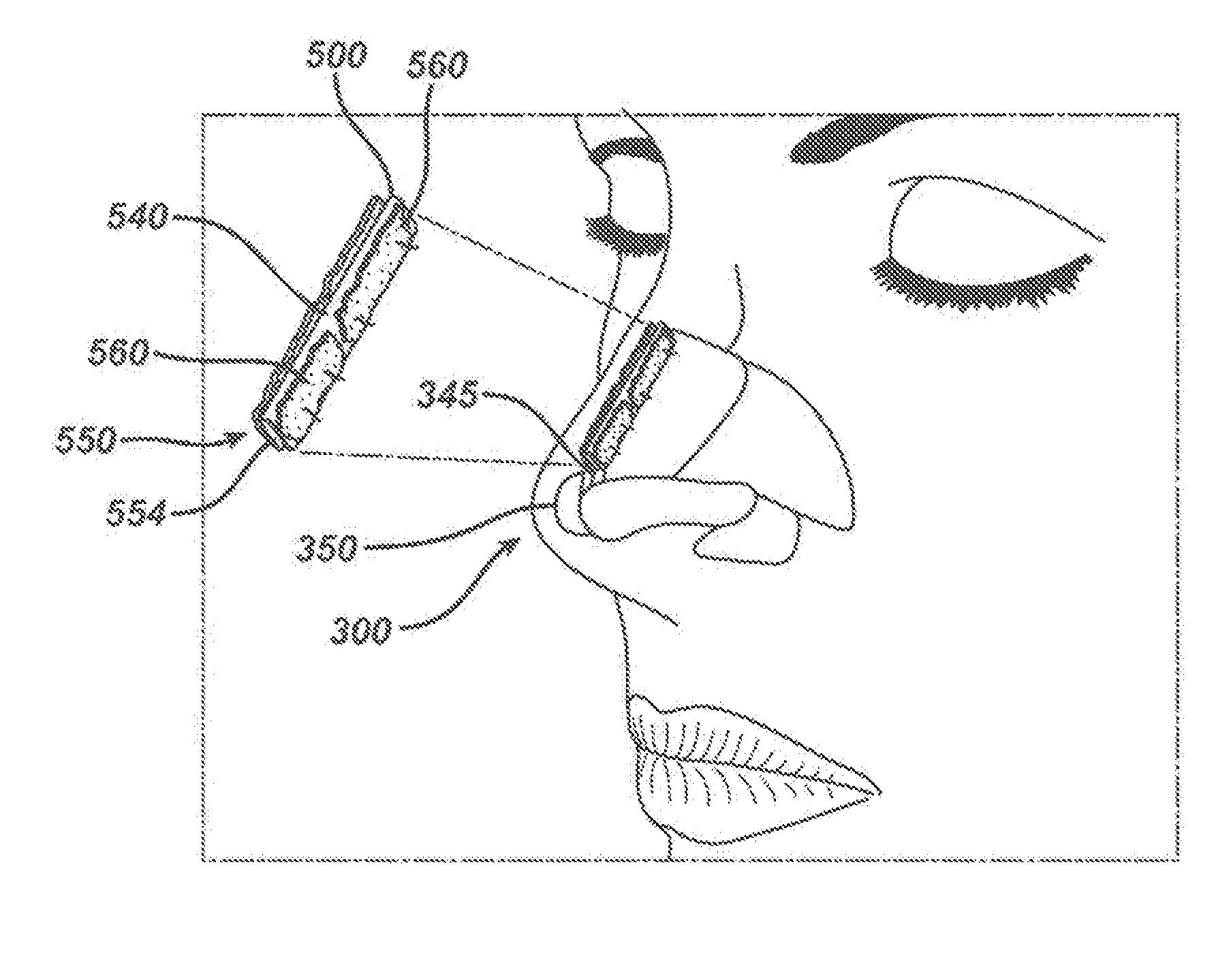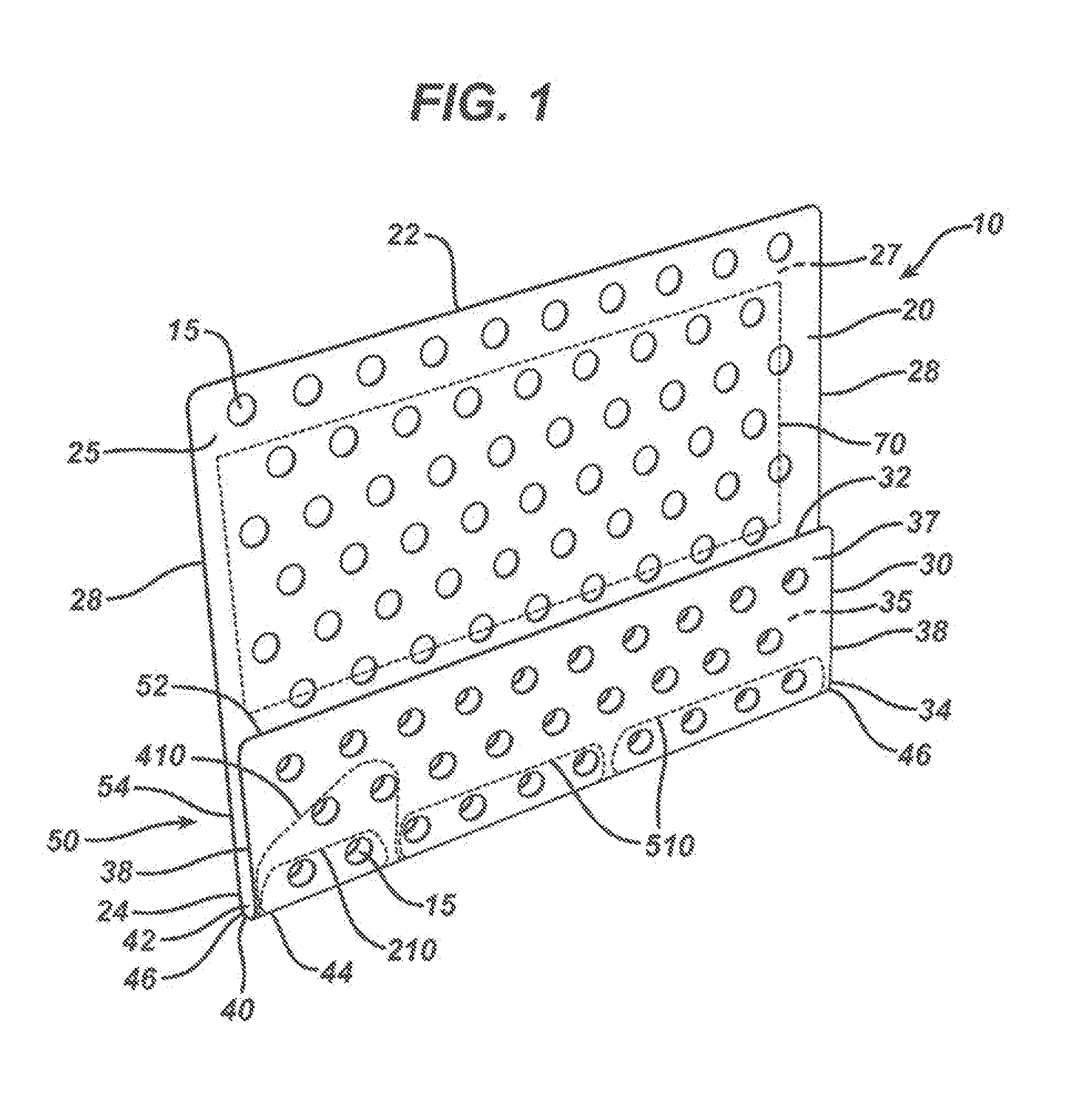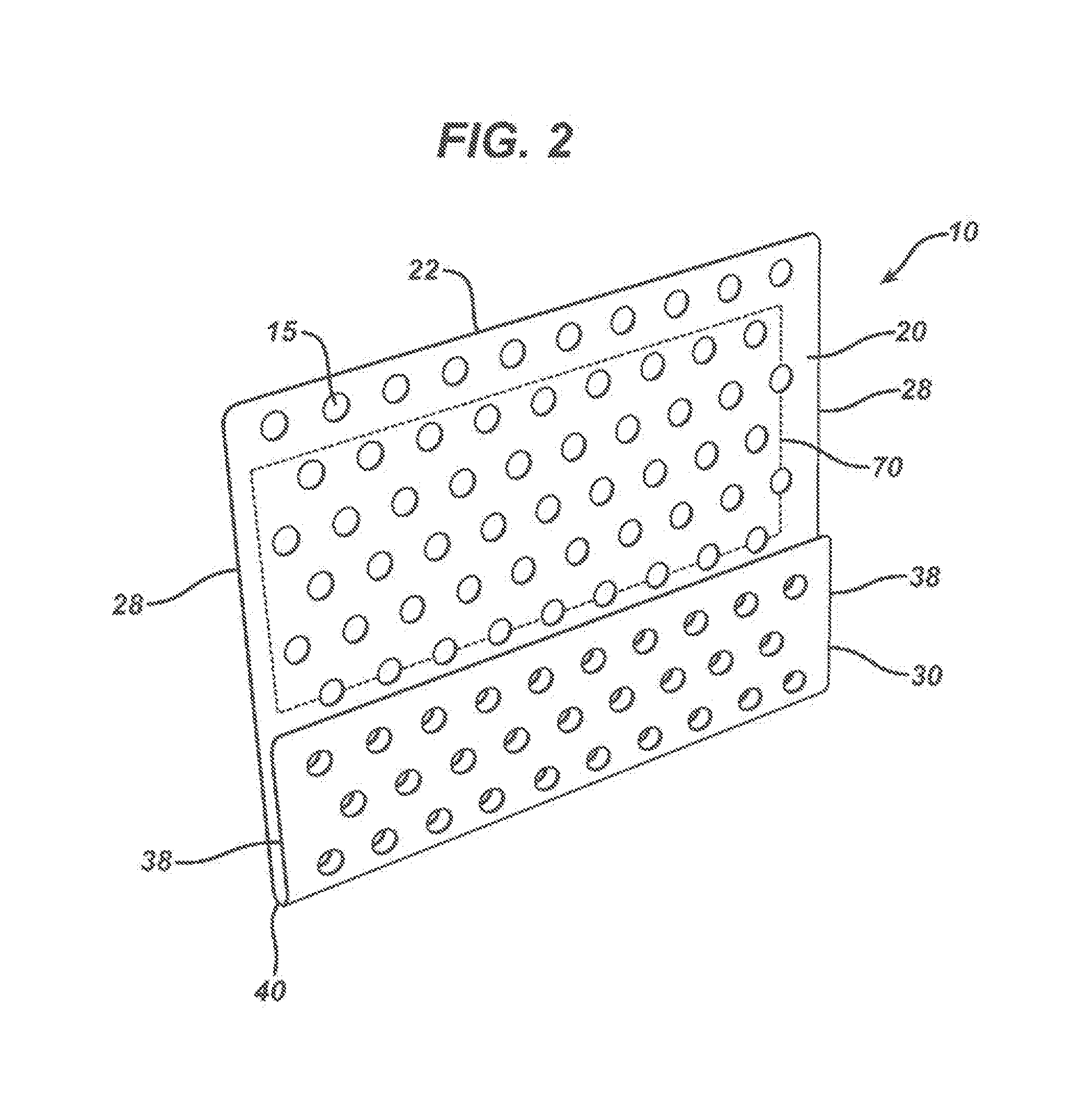Universal Bioabsorbable Nasal Implant Kit
a bioabsorbable, medical device technology, applied in the field of bioabsorbable implantable medical devices, can solve the problems of restricted airflow in the nasal passages, nose, face or head, and narrowing of the nasal valve area, and achieve the effect of reducing the risk of infection, and improving the quality of li
- Summary
- Abstract
- Description
- Claims
- Application Information
AI Technical Summary
Benefits of technology
Problems solved by technology
Method used
Image
Examples
example 1
[0084]A universal nasal kit device of the present invention was thermally formed from a flat polymeric sheet made from a blend of 20 wt. % polydioxanone polymer and 80 wt. % of a copolymer of 85 / 15 poly(lactide-co-glycolide). The plate was extruded using a 1.25 inch extruder and a 10 inch flex lip film die, and collected on a three-roll horizontal stack with release papers on both side of the film. The extruder and the film line were manufactured by Crompton Davis Standard Corporation, Pawcature, Conn., USA. The film die had a temperature of about 185° C. and a die gap of 0.0.15 in. The turn was collected at a roll speed of about 1.5 feet per minute. The plate had a thickness of about 0.15 mm. Strips of the film were punched to produce perforations and the outline of the device. The plate had a width of 50 mm and a length of 56 mm. Multiple rows of suturing holes of about 2.0 mm in diameter were formed along a first line about 3 mm away from the centerline of the spine and the paral...
example 2
[0085]A universal nasal kit device of the present invention was thermally formed from a flat polymeric sheet made from a 100% polydioxanone polymer. The plate was extruded using the same equipment as described in Example 1. The film die temperature was set at about 140° C. and a die gap of 0.006 in. The film was collected at a roll speed of about 0.9 feet per minute. The plate had a thickness of about 0.25 mm. Strips of the film were punched to produce perforations and the outline of the device. The plate had a width of about 50 mm and a length of about 56 mm. Multiple rows of suturing holes of about 2.0 mm in diameter were formed along a first line about 3 mm away from the centerline of the spine and the parallel lines about 4 mm from each other throughout the remaining flat portions of the kit device. The holes spaced about 4 mm from each other on a given line, were formed by die cutting. In a subsequent step the pre-cut devices were placed in a forming set of dies at about 85° C....
example 3
[0086]A patient has as a middle vault deficiency with resulting significant functional and cosmetic implications. The condition requires surgical intervention and repair. The patient is prepared for nasal reconstructive surgery in a conventional manner including the steps of injecting a local anesthetic, making marginal and / or columellar incisions, elevation of the soft tissue skin envelop and developing appropriate dissection planes. The procedure is continued by placing appropriate grafts and using suture techniques to achieve the desired functional and aesthetic results depending on the preoperative assessment and surgical plan. A spreader graft device of the present invention, having a configuration as seen in FIGS. 18 and 19, is cut from a kit device of the present invention as seen in FIG. 17 (and trimmed if required) and is implanted by a surgeon in the following manner: gaining access to the nasal dorsum; separating the upper lateral cartilages from the nasal septum; develop...
PUM
| Property | Measurement | Unit |
|---|---|---|
| angle | aaaaa | aaaaa |
| angle | aaaaa | aaaaa |
| angle | aaaaa | aaaaa |
Abstract
Description
Claims
Application Information
 Login to View More
Login to View More - R&D
- Intellectual Property
- Life Sciences
- Materials
- Tech Scout
- Unparalleled Data Quality
- Higher Quality Content
- 60% Fewer Hallucinations
Browse by: Latest US Patents, China's latest patents, Technical Efficacy Thesaurus, Application Domain, Technology Topic, Popular Technical Reports.
© 2025 PatSnap. All rights reserved.Legal|Privacy policy|Modern Slavery Act Transparency Statement|Sitemap|About US| Contact US: help@patsnap.com



